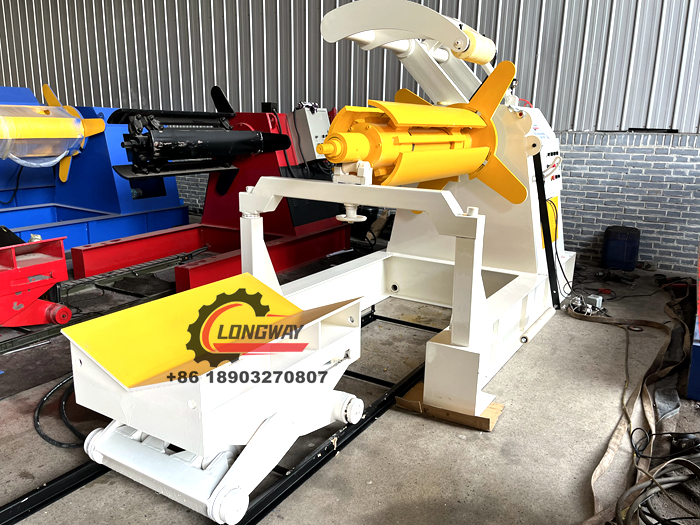cost of roll forming machine factory
Understanding the Cost of Roll Forming Machine Factory A Comprehensive Overview
The roll forming machine industry plays a pivotal role in the manufacturing of metal products through an innovative process that minimizes waste while maximizing efficiency. Understanding the costs associated with setting up and running a roll forming machine factory is crucial for entrepreneurs and manufacturers considering entering this sector. This article will explore the various factors influencing these costs, the benefits of roll forming, and strategies for cost management.
What is Roll Forming?
Roll forming is a continuous bending operation in which a long strip of metal, usually coiled steel, is passed through consecutive pairs of rolls to obtain the desired cross-section. This manufacturing process is widely used for producing items such as metal roofing, gutters, and panels. It is celebrated for its ability to create complex shapes while maintaining tight tolerances, making it ideal for high-volume production.
Key Elements Impacting Costs
1. Initial Investment The initial investment in a roll forming machine factory can be substantial. It includes the cost of purchasing machinery, setting up the factory, and acquiring necessary technology. A good quality roll forming machine can range from $20,000 to over $500,000, depending on its specifications and capabilities. Additionally, factory layout, electrical installations, and other infrastructure contribute to the start-up costs.
2. Raw Materials The cost of raw materials is another significant expenditure. Steel prices fluctuate based on global market conditions, trade policies, and demand. Thus, businesses must establish reliable supply chains and manage inventory effectively to mitigate the impact of these price changes. Suppliers that provide consistent quality and competitive pricing play a vital role in maintaining production costs.
3. Labor Costs Skilled labor is essential in the operation of roll forming machines. Labor costs can vary significantly based on location, expertise required, and local economic conditions. Training workers to operate complex machinery safely and efficiently also involves added costs. Investing in a skilled workforce can enhance productivity and reduce errors, ultimately impacting the overall cost of production.
4. Maintenance and Operation Like any industrial machinery, roll forming machines require regular maintenance to operate at optimal efficiency. Maintenance costs can vary based on machine complexity, usage, and operational practices. Additionally, operational costs, including utilities (electricity, water, etc.), must be factored into the overall budget. Companies will benefit from implementing preventative maintenance programs to extend equipment life and reduce unexpected breakdowns.
5. Regulatory Compliance Depending on the region and the products produced, factories must comply with various regulations and standards, including environmental regulations, safety protocols, and quality assurance certifications. Meeting these requirements often incurs additional costs, whether it’s for adopting new technologies or implementing new processes.
cost of roll forming machine factory

6. Market and Competition The competitive landscape influences pricing strategies and, ultimately, profit margins. Companies must continually assess market conditions, customer preferences, and innovations in the industry to remain competitive. Market research can help businesses adapt their offerings and pricing structures, ensuring that they meet client demands while effectively managing costs.
Benefits of Roll Forming Machines
Despite the significant costs, roll forming machines offer numerous benefits that can lead to long-term savings and profitability
- Efficiency and Speed Roll forming allows for high-speed production with minimal downtime, which can lead to a higher throughput and return on investment. - Material Efficiency The continuous process reduces waste, with more material being utilized in the final product. - Versatile Product Range Roll forming can be used to create an array of shapes and profiles, allowing manufacturers to diversify their product offerings. - Consistency and Quality The precise nature of the roll forming process ensures uniformity in dimensions and quality, which can enhance customer satisfaction.
Strategies for Cost Management
To optimize costs, manufacturers can adopt various strategies
1. Lean Manufacturing Principles Implementing lean practices helps eliminate waste and improve processes, significantly reducing overall costs. 2. Investing in Automation Automating specific processes can enhance productivity, reduce labor costs, and minimize human error. 3. Bulk Purchasing Buying raw materials in bulk can yield discounts and lower costs over time. 4. Regular Training Ongoing training programs for employees can improve efficiency, reduce accidents, and enhance product quality.
Conclusion
Launching and managing a roll forming machine factory involves navigating various costs related to equipment, materials, labor, and compliance. However, by understanding these costs and implementing effective management strategies, manufacturers can position themselves for success in a competitive market. With the right focus on efficiency and quality, roll forming remains a lucrative sector within the manufacturing industry, promising rewarding returns for those willing to invest in it.
-
Roof Panel Machines: Buying Guide, Types, and PricingNewsJul.04, 2025
-
Purlin Machines: Types, Features, and Pricing GuideNewsJul.04, 2025
-
Metal Embossing Machines: Types, Applications, and Buying GuideNewsJul.04, 2025
-
Gutter Machines: Features, Types, and Cost BreakdownNewsJul.04, 2025
-
Cut to Length Line: Overview, Equipment, and Buying GuideNewsJul.04, 2025
-
Auto Stacker: Features, Applications, and Cost BreakdownNewsJul.04, 2025
-
Top Drywall Profile Machine Models for SaleNewsJun.05, 2025








